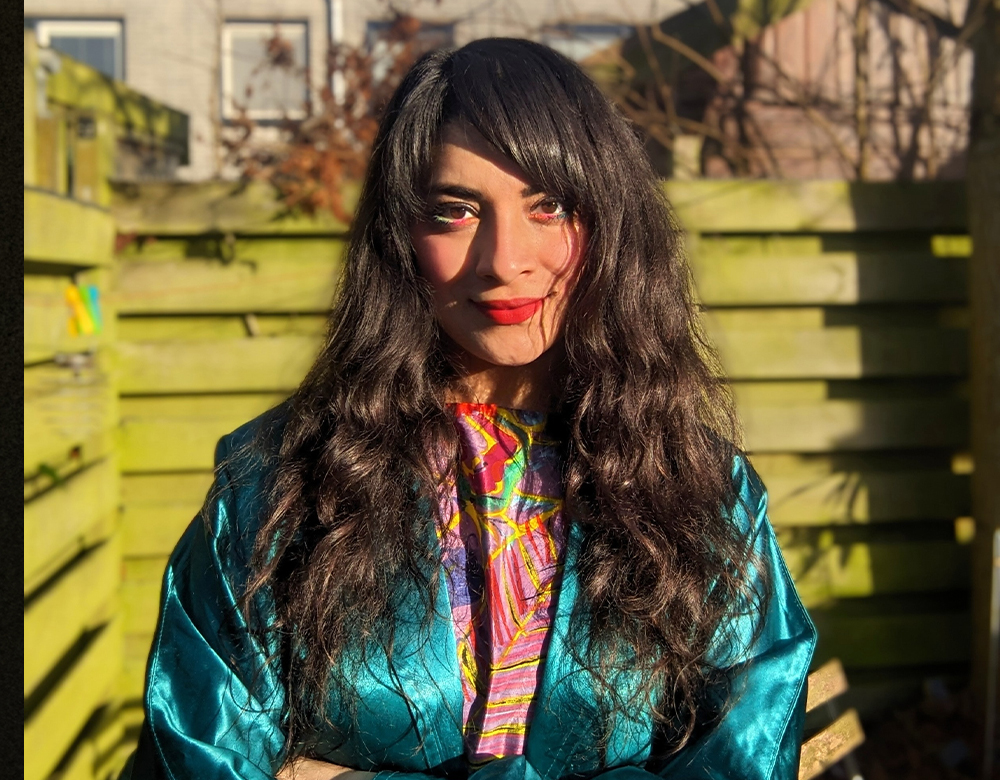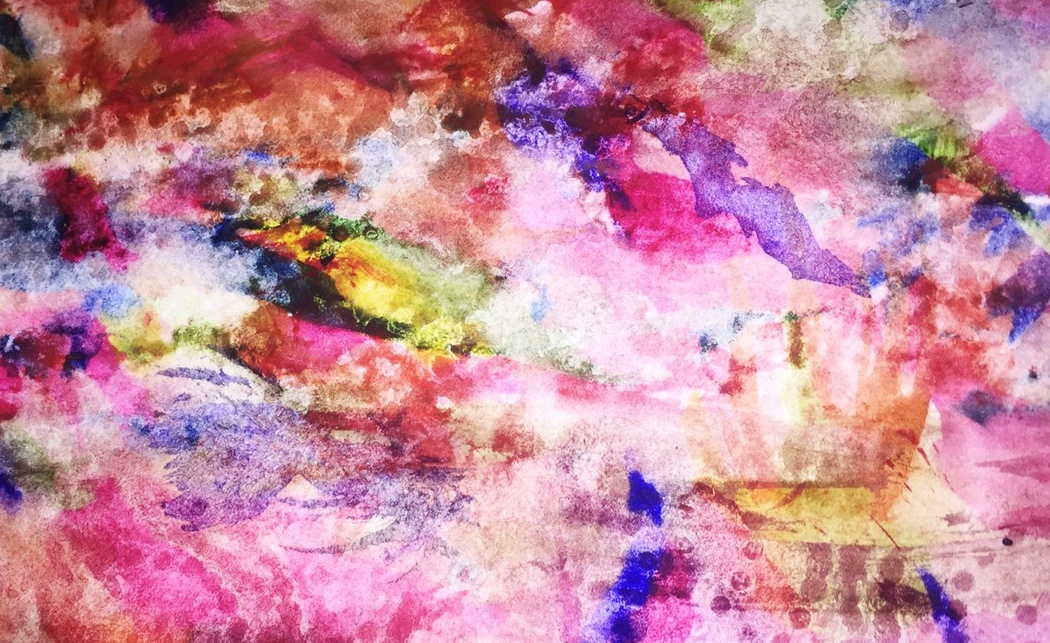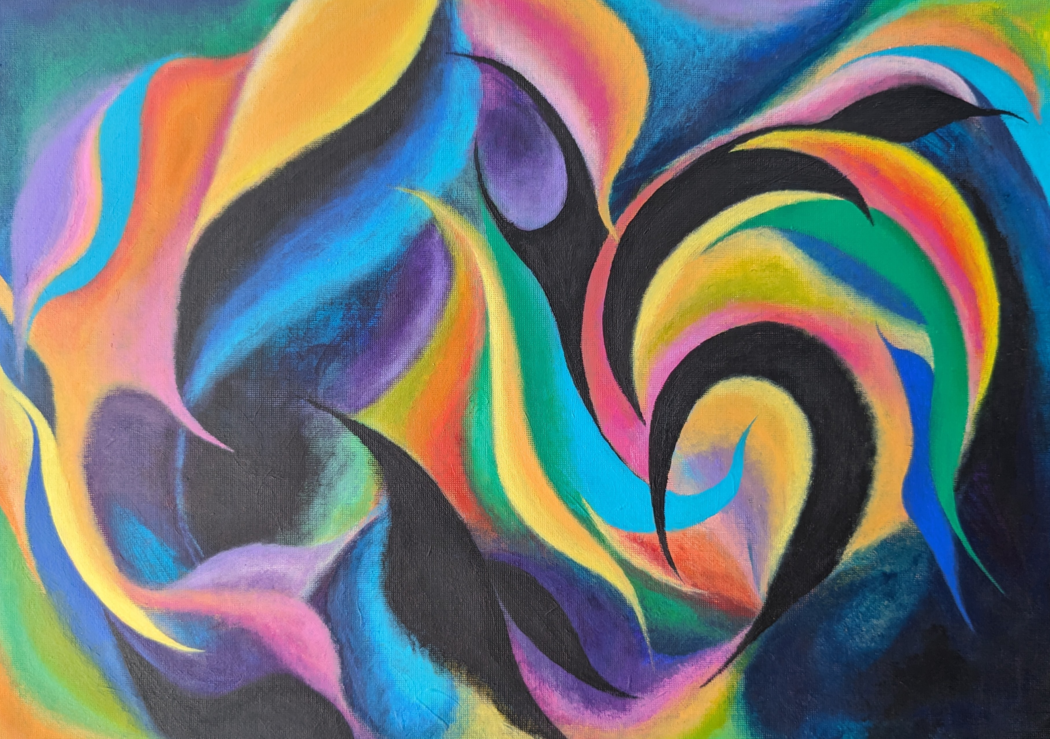Armani Eloise
Where do you live: Groningen, Netherlands
Your education: Bsc Mathematics, King’s College London
Describe your art in three words: Dynamic, Expressive, Abstract
Your discipline: Multifaceted
Website | Instagram

You have a background in Mathematics, which is quite different from the Arts. What is the relationship between Mathematics and Art for you?
Mathematics and Art can both embody precision, creativity, and abstraction. They provide a space for the evolving exploration of forms and components, creating new perspectives and expressions.
Both use tools and techniques that allow ideas to flow freely and connections to emerge, uncovering insight and beauty.
Throughout my studies, I often visualised elements of complex theories which helped me to develop abstract reasoning. Mathematical concepts inspired shapes, lines, colours, and forms to convey movement and balance.
I integrate structure with visualisation across my art work, using precision, intuition and spontaneity. By merging intention with freedom, the process weaves together connections and layers to form a whole, much like equations that reveal relationships and patterns, unfolding a story as they are solved.
I see Mathematics and Art as intertwined languages of discovery, both offering a way to describe our world, expressing its simplicity, complexity and chaos in many unique, yet meaningful ways.
As a self-taught artist, what insights or techniques did you gain from working with different mediums?
I have worked with mediums such as polymer clay, wax, textiles, and glass. Each offers interesting challenges, insights, and opportunities to learn new techniques.
Through polymer clay, I have learned to observe and capture the intricacies of various objects. This versatile medium has allowed me to refine my attention to detail, experiment, and push the boundaries of what I can create. I enjoy studying and replicating shapes, angles, and colours—such as the masonry of a chimney or the subtle variations on an apple’s surface.
Sculpting has taught me techniques in gradient blending, texturing, tool usage, and precision in proportionality and symmetry.
Working with glass has deepened my understanding of some technical aspects in art, such as cutting, soldering, framing, and fusing. This has also sparked a curiosity to learn techniques like glassblowing, which I would like to pursue in the future.
Your abstract paintings explore themes rooted in nature and cosmic phenomena. Could you elaborate on how you convey these themes in your work?
I convey these themes by connecting observations of nature with the emotional resonance of colour.
In paintings like Tropic Storm and Summer Meadow, I aimed to capture the dynamic energy and sensory experiences of nature, such as seasons and shifting atmospheres. I portray rhythm and movement through textures, gradients, fluid forms, and layered compositions.
To express the awe and ethereal mystery of the universe, I use cosmic patterns, luminous tones and varying opacities. These themes often intersect with nature and personal experiences. For example, Celestial Vines merges the organic with the ethereal, while Astral Projection represents a journey of spiritual discovery.

Armani Eloise | Astral Projection
The piece ‘Darkness and the Light’ has a poetic description. Do you often write to accompany your art? How does writing help you express the ideas behind your visual work?
I often write short stories and poems, which sometimes accompany my artwork.
Writing allows me to explore the relationship between observation, experience, and emotion. It is a space where abstraction connects with personal reflections and perspectives.
I use writing a tool to visualise ideas, extend meaning beyond the canvas, and open new pathways for interpretation.
Darkness and the Light seems to reflect a journey through different emotions and states of being. How did you approach capturing these intangible experiences visually?
Darkness and the Light explores the evolution of inner emotional landscapes in response to changing states of life.
I associated Light with positive emotions such as joy, optimism, clarity, and love.
Whilst Darkness represents negative emotions such as sadness, despair, and distress. This is expressed through the use of dark and light shades of colour, with varying intensities to capture a spectrum of emotions spanning the path between hardship to joy.
Slivers of lighter shades are used to enter the darkness, symbolising hope — whether it’s the feeling of looking forward to something, or the comforting presence of a friend. These moments can lift us from darkness, even if only temporarily, or transport us to a different emotional state that alters our perception and experience of the situation.
The transition between colours and shapes represents the way events in life and their emotional impacts can change, flow and evolve. Darker shapes and areas are used to symbolise difficult experiences and how they can sometimes feel like a piercing sensation, infiltrating into other areas of life.
Whether positive or negative, sudden changes are represented by bold boundaries, whereas the more subtle changes use blurred transitions between shapes and colours. The direction and position of shapes were used to reflect how states in life can sometimes flow, while at other times, they may feel fragmented and disjointed.
Darkness and the Light invites viewers to explore their own emotional landscapes—a space to reflect on the sensations and memories that forms and colours may evoke.
It offers a moment to consider how they see the balance between light and dark in their own lives, and how these contrasting forces shape their experiences and emotions.
Colour seems to play a central role in your art. What inspires your approach to using colour, and how do you decide how to use it in your work?
I feel colours, and use them to express myself in many areas of life.
There is a connection between the visual and emotional sensations that colours bring, and I often rely on intuition to guide their use.
By blending colour theory with visual instinct, I create palettes that align with a theme or unfold spontaneously.
I have found Art as a way to project the experience of colour in life, transforming perception and emotion into creation.
 Armani Eloise | Darkness and the Light
Armani Eloise | Darkness and the Light
You’ve explored various mediums, from Clay to Data art. What draws you to discover and work with different mediums ?
Exploring different mediums allows me to engage with intuition and technique in new ways. Each medium offers an opportunity to discover its unique properties and experiment with how various tools and techniques can be applied and combined, opening up an expansive space for creativity.
I enjoy the process of learning, experimenting, and refining. Watching an idea, whether familiar or entirely new, take shape and evolve into a finished piece brings a deep sense of fulfillment. Along the way, unexpected results often spark new ideas, branching out into future creations.
There’s a thrill in creating art through new mediums. I experienced this whilst using Tableau, a data visualisation tool designed for analytical dashboards. I found that it can also be a medium for spontaneous creation. This gave space to a new type of canvas, where calculations, charts and software features came together as a palette, transforming ordinary data into Data Art.

Leave a Reply